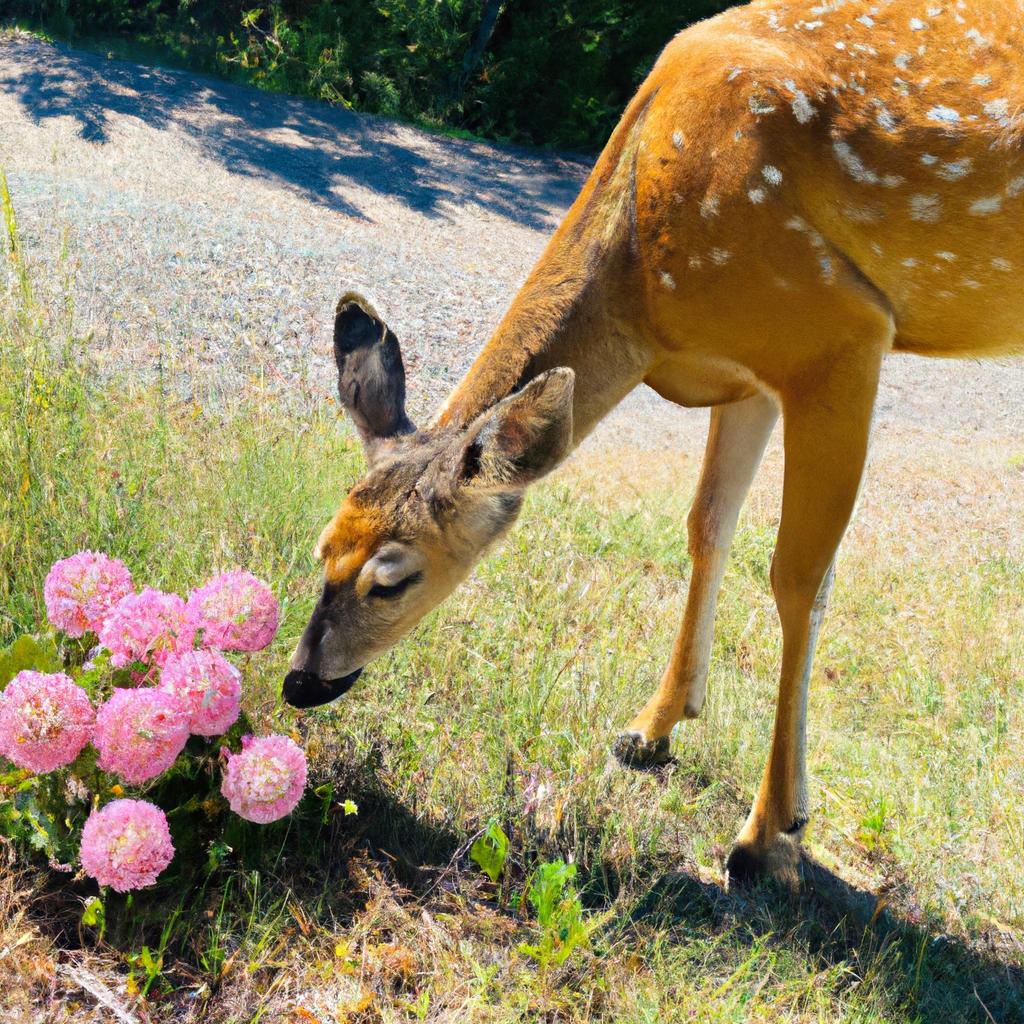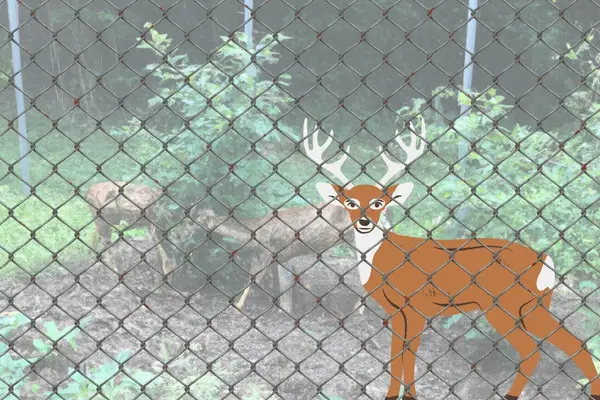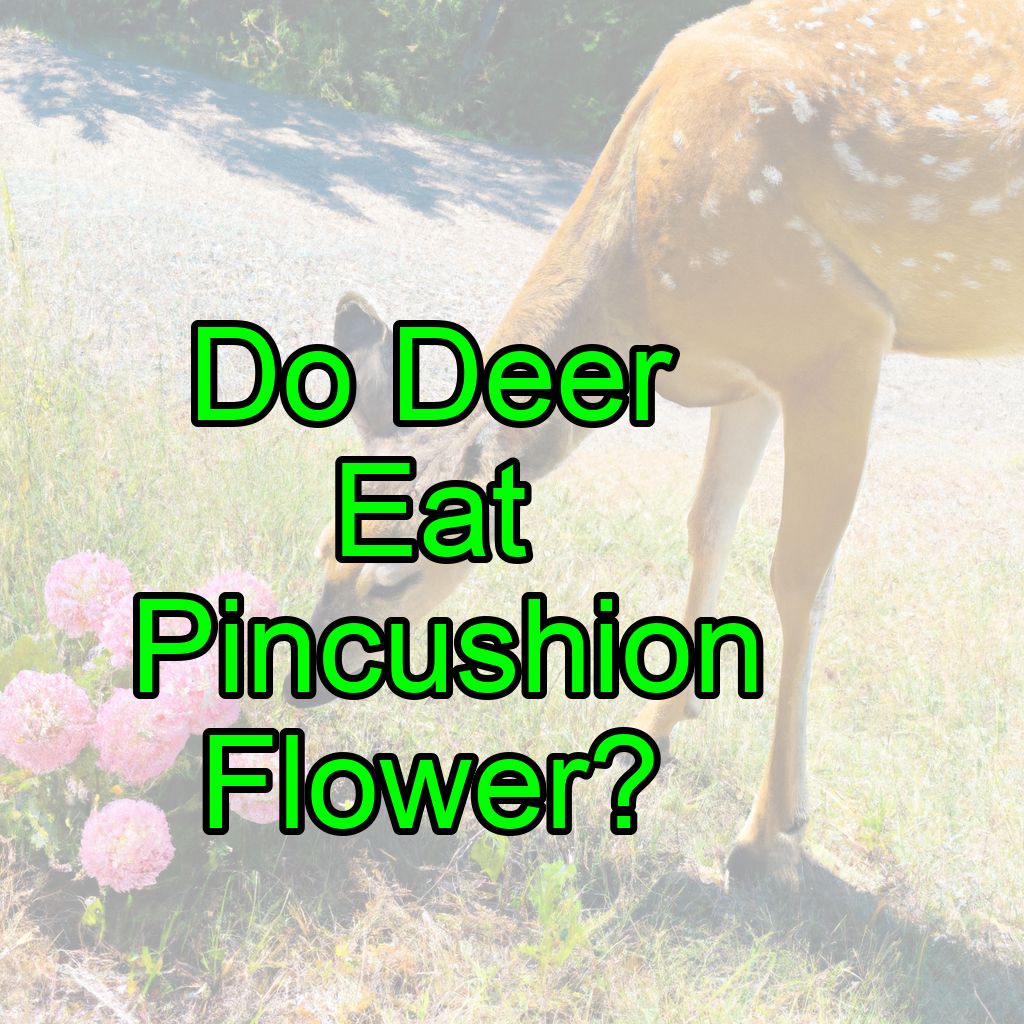As a garden owner, one of the biggest challenges I face is keeping my plants safe from wildlife. Deer, in particular, are notorious for nibbling on anything and everything in their path.
Deer may occasionally nibble on Pincushion flowers (Scabiosa), but these plants are considered deer-resistant. This means that while deer might sample them, they are not a preferred food source and are less likely to be heavily browsed. However, deer preferences can vary depending on local conditions and available food sources. To protect your Pincushion flowers, consider planting them with other deer-resistant plants or using deer deterrent methods such as fencing or repellents.
Recently, I’ve been wondering whether my beloved pincushion flowers are at risk of becoming a deer’s next meal. So, do deer eat pincushion flower?
Let’s find out.
Contents
No, Deer Do Not Prefer Pincushion Flowers

The good news is that deer do not typically prefer pincushion flowers.
While they may sample them if there is nothing else available, these flowers are not high on their list of preferred snacks.
Pincushion flowers have a bitter taste and contain chemicals that deer find unappetizing.
But Deer May Still Eat Pincushion Flowers!
However, just because deer do not prefer pincushion flowers does not mean they won’t eat them. If other food sources are scarce, or if a deer is particularly hungry, they may resort to snacking on pincushion flowers.
Additionally, if you live in an area with a high deer population, the odds of them eating your pincushion flowers increase.
When Do Deer Eat Pincushion Flowers?
Deer are most likely to eat pincushion flowers in the early spring when other food sources are scarce. They may also nibble on them in the fall when they are stocking up for winter.
However, it’s worth noting that deer are opportunistic eaters and may sample your pincushion flowers at any time of year if they are hungry enough.
How Do Deer Eat Pincushion Flowers?
When deer eat pincushion flowers, they typically bite off the top of the stem and eat the flower head.
In some cases, they may also eat the leaves or stems of the plant.
How Often Do Deer Eat Pincushion Flowers?
The frequency with which deer eat pincushion flowers depends on a variety of factors, including the time of year, the availability of other food sources, and the size of the deer population in your area.
In general, however, if you live in an area with a lot of deer, you are more likely to see them nibbling on your pincushion flowers.
Why Do Deer Eat Pincushion Flowers?
Deer are herbivores and need to eat a lot of vegetation to survive.
They may eat pincushion flowers because they are hungry and there is nothing else available, or simply because they find them palatable.
Additionally, deer may be attracted to the bright colors and sweet fragrance of pincushion flowers.
Implications for Backyard Owners
If you are a backyard owner and are concerned about deer eating your pincushion flowers, there are a few things you can do to try and deter them. Planting deer-resistant plants, using deer repellents, and installing fencing are all effective ways to keep deer away from your garden.
Other Animals That Might Eat Pincushion Flowers
While deer are the most common culprits, there are other animals that may eat pincushion flowers as well.
Rabbits, groundhogs, and squirrels have all been known to nibble on these plants.
How Do I Protect My Yard From Deer?
There are several ways to prevent pests like deer from invading your backyard. I will go through my favorite methods here.
Many of these methods overlap with those used to deter groundhogs and gophers from a backyard, but the exact products and prioritized recommendations are different.
1. Motion-activated sprinklers
Like most animals, deer hate surprises, and they will run away if suddenly sprayed with water. I like this solution because it is humane, simple, effective, and does not require much time to set up and there are many models to choose from.
The Havahart 5277 is a motion-activated sprinkler that is activated by the movement of animals up to 25 feet away and sprays them with a harmless water jet, frightening them off and keeping them at bay.
The included metal stake makes it easy to install in your backyard, and the sprinkler can be rotated 180 degrees for maximum coverage.
These sprayers work particularly well for larger animals as they are easier to target and detect. They are also less prone to smaller stimuli but a splash of cold water is quite a substantial impact to them!
2. Ultrasonic Sound Emitters
Deer, as well as other animals that may invade your backyard, tend to have very good hearing. This means that loud or consistent noises will scare them away or at least shorten their visits significantly!
One of my favorite technologies to keep pests away from my backyard is these cool solar-powered ultrasonic sound emitters that you can buy right from Amazon!
In my experience, they really work, and the solar panels on top save you the time and money of changing batteries all the time.
3. Using Lights and Reflections
Deer are most active at dawn and dusk so they may avoid areas that have bright lights. Motion-activated lights, sounds, and sprinklers may help prevent deer from entering your yard.
Placing CDs or tin foil and mirrors around your yard is another cheap and effective way to create light reflections that blind and scare deer away from your tomatoes.
This may sound a little old-fashioned but it still works! The reflective surface of CDs or tin foil drives deer crazy and will make them seek away from your plants.
You can use old CDs you no longer need or aluminum trays from takeaway containers, just make sure they reflect light well.
If you have a lot of plants to protect this way, it may be a good idea to invest in some commercial mirrors or electronic light emitters like the ones shown above.
4. Build a Fence
The most obvious and practical solution to protecting your plants from deer is to install a fence around the patch. A fence should be at least 6 feet tall and sunk in the ground about 8 inches.

The best fencing material for this purpose is a cattle panel or hog panel as they are very sturdy and can withstand even quadruped animals such as goats, cows, and deer.
However, most chicken fencing types will do. This will be strong enough to stop them from getting through while still allowing for airflow and sunlight.
If you don’t like the idea of building a fence around your entire onion patch then you can try fencing off only the area that your onions, tomatoes, or zucchinis are in; this will at least keep some of the deer, groundhogs or gophers away from them.
5. Using Hot Pepper Or Garlic Spray
This is a good way to protect your vegetable plants or decorative flowers against pests such as gophers, rabbits, groundhogs, and deer. It will also protect your backyard against the neighbor’s cat that thinks it is fine to use your vegetable garden as a toilet.
You only need about 1 tablespoon of crushed chili pepper and garlic along with 1 cup of vinegar per half a gallon of water.
Spray this mixture on any exposed parts of the plant until completely covered. Make sure you reapply whenever rain washes away the spray.
6. Use Deer Deterring Companion Plants
Instead of making a tincture out of strongly smelling plants, you can also just plant the plants themselves!
Companion planting is a good way of deterring animals like deer from your garden. You can plant strong-smelling plants such as garlic, basil, lavender, and chives around your favorite vegetables.
These plants will keep animals like deer, gophers, and mice away because they don’t like the smell of these and they mask the smell of the delicious plants.
7. Use Deer Repellents
You can use some of the commercially available repellents to protect your vegetable plants against deer, gophers, and other animals eating your tomatoes.
You will need to be careful when using these though because some of them can end up harming you and your pets if not applied properly. Some of the commercial deer repellents available include Shake-Away, Bonide Repels All, Critter Ridder, and Tom Cate Repellent.
Green Screen is my favorite one as it comes in small bags that you place around your tomato plants. It is safe and easy to use with all edible plants in your garden!
Watch how Farmer Dean uses the Green Screen repellent to keep away deer from his tomatoes in this video:
Conclusion
In conclusion, while deer do not typically prefer pincushion flowers, there is still a chance they may eat them if other food sources are scarce. As a garden owner, it’s important to be aware of the risks and take steps to protect your plants if necessary.
By planting deer-resistant plants, using repellents, and installing fencing, you can keep your garden safe and thriving.



















